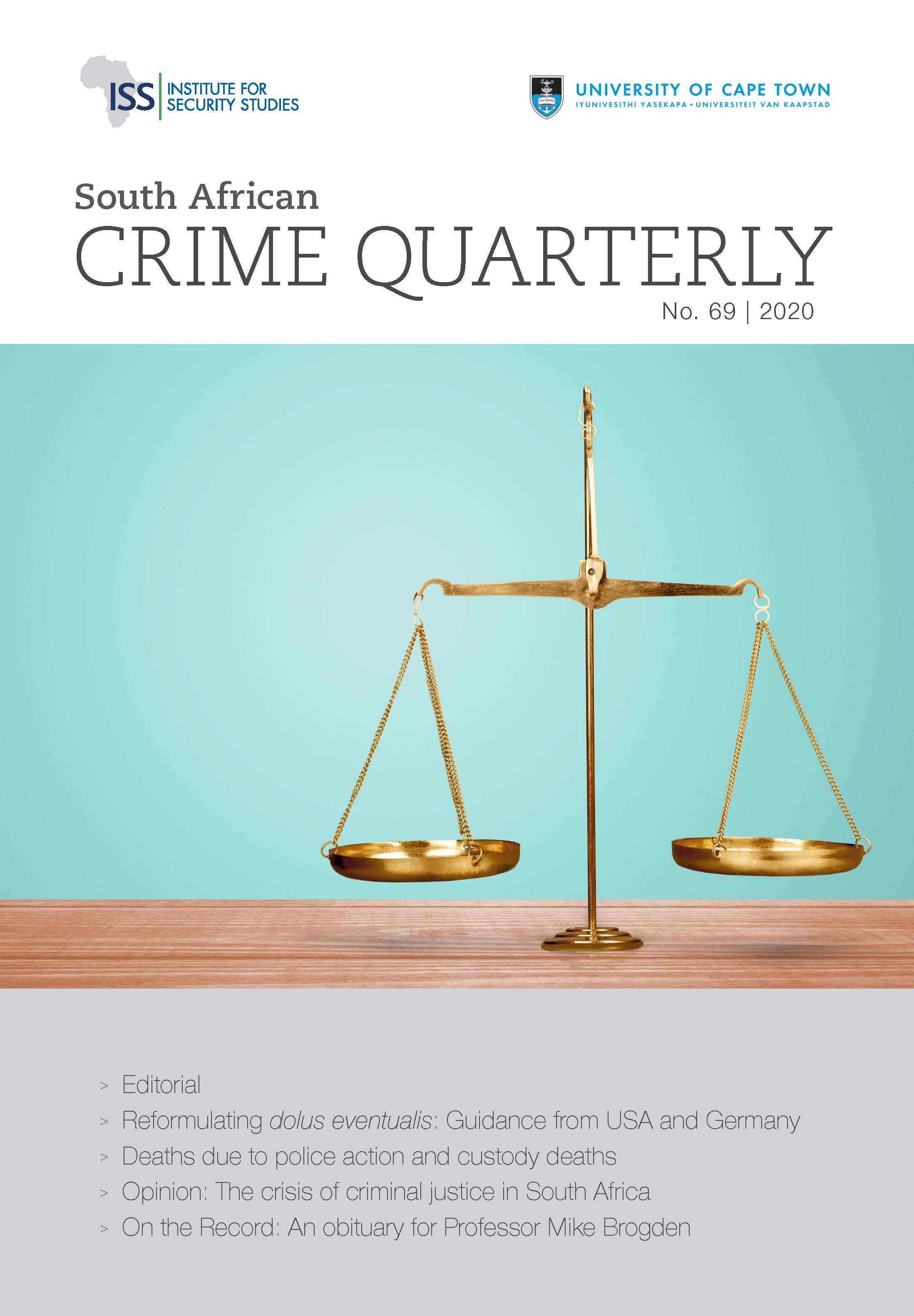Reformulating dolus eventualis: Guidance from America and Germany
DOI:
https://doi.org/10.17159/2413-3108/2020/i69a6108Abstract
Dolus eventualis has correctly been described as an ‘enigma’. Not only has it been variously described by the courts, but the courts have applied the two-stage test without providing an in-depth analysis of what it means. Both dolus eventualis required for murder and conscious negligence required for culpable homicide, contain an element of subjective foresight of the remote possibility of death occurring. As a result, the distinction between murder and culpable homicide has become confused over the years, and is evident in the courts vacillating between findings of murder and culpable homicide. Considering the lack of clarity, this article examines the test for dolus eventualis in the case of murder and determines whether it can be more clearly distinguished from culpa, in the case of culpable homicide. German and American law and academic opinion is consulted in order to establish how the respective countries have dealt with the conflation of murder and negligent killings.
Downloads
Downloads
Published
Issue
Section
License
Copyright (c) 2020 Author and Institute for Security Studies/University of Cape Town

This work is licensed under a Creative Commons Attribution 4.0 International License.
SACQ is licenced under a creative commons licence (CC BY) that allows others to distribute, remix, tweak, and build upon your work, even commercially, as long a they give appropriate credit, provide a link to the license, and indicate if changes were made. They may do so in any reasonable manner, but not in any way that suggests the licensor endorses you or your use.
Copyright for articles published is vested equally between the author/s, the Institute for Security Studies and the Centre of Criminology (UCT).




.png)